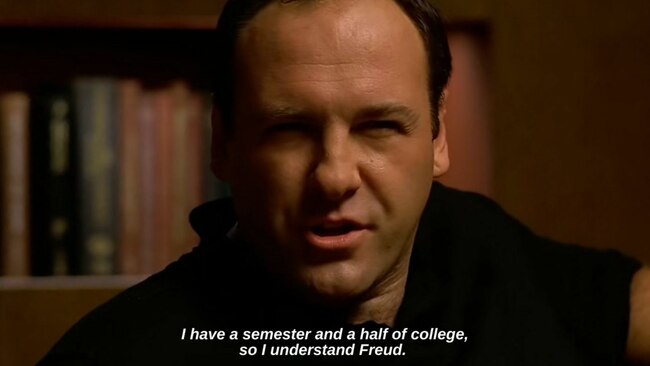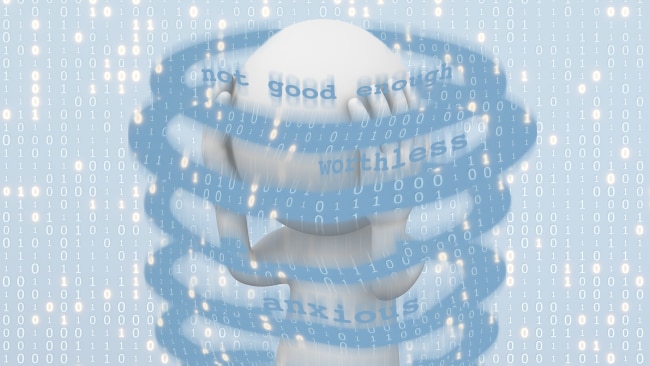Is it really trauma, or are you just unhappy?
The internet is awash with search engine optimised articles that have made it easier than ever to label ourselves, those in our orbit, and even politicians; with a disorder wrought straight from the DSM-5.

The internet is awash with search engine optimised articles that have made it easier than ever to label ourselves, those in our orbit, and even politicians; with a disorder wrought straight from the DSM-5.
A couple of years ago, I became obsessed with attachment theory. It is pretty much catnip for pop psychologists, as it’s easy enough to do a few quizzes and get ushered into a category: secure, anxious or avoidant. I decided I was avoidant: a style of attachment characterised by excessive need for independence born of a fear of being screwed over by a significant other (Or something.) Ding ding ding! I had been found.
This was not a diagnosis born in a therapist’s office, of course, but cobbled together from some texting with a friend. She explained that she suffered from an insecure and anxious attachment style, in contrast to the guy she was dating, who was avoidantly attached. I realised that the guy’s behaviour reminded me a lot of my own, and in the coming hours I fell into an internet wormhole, and emerged - unbidden - as a troubled and avoidantly attached individual with a history of complex trauma.
My therapist was unimpressed with my findings.
“You’re not traumatised”, he grumbled. He also brushed off my suggestion of an attachment disorder.
“It’s just fear”, he said. “You get scared. That’s not a disorder.”
It was a sobering moment, but I doubt I'm the first unqualified individual to take the diagnostic process into my own hands. From “Seven signs you’re dealing with a narcissist” to “Your guide to anxious attachment styles”, the internet is awash with search engine optimised articles that have made it easier than ever to label ourselves, those in our orbit, and even politicians; with a disorder wrought straight from the DSM-5.
Armchair psychologists are officially thriving, but that’s not wholly a bad thing. It wasn’t that long ago that mental health was a deep source of shame. It was only about ten years ago that a friend of mine would say that she’s unavailable one night during the week without explaining why. This went on for a while, until under her breath she finally whispered: “I’m doing counselling.” While millennials and zoomers are now lampooned for our supposed readiness to be ‘triggered’ or need for ‘safe spaces’, it’s hard to deny that conditions like depression and anxiety carry less stigma than they did.

On the other hand, is there a danger in throwing around traditionally clinical terms - whether it’s “trauma”, “social anxiety” or “gaslighting” - that non-therapists don’t fully understand?
Of course, getting our hands on whatever language helps us better make sense of ourselves and the people around us can bring huge relief. But is the arrival of this language in the mainstream leading us to see disorders that aren’t really there?
“All mental disorders exist on a spectrum,” Dr Foulkes told The Oz. “We artificially created a boundary that said this point of the spectrum we can call it a disorder, and if your symptoms aren’t severe enough or haven’t lasted long enough, then that won’t count as an official disorder.”
We’re now in a situation, Dr Foulkes notes, where the labels previously reserved for those with severe illness are leaking down to milder and milder ends of the spectrum. And while this comes with some benefits, it’s also come with a cost.
“The costs are that these are quite burdensome labels to take on. If, for example, something difficult happens to you and you react badly to it and you interpret that as being PTSD, that can be frightening. There’s still an awful lot of stigma around disorders. It can make you think there’s something [inherently] wrong with you; something wrong with your brain.”
She adds that assuming you have a psychiatric illness can also change the way that people respond to you, and make you believe that you can only be helped with medical intervention rather than more typical avenues of support. “It also affects how people view the permanence of the problem”, she says, adding that psychiatric labels can make you feel as though you’re damaged goods.
“They’re very heavy labels to take on.”
Dr Foulkes doesn’t suggest, however, that people who don’t reach the threshold for having a mental illness should just suck it up.
“I don’t think the message should be, either you have a really severe disorder or you’re fine and you’re not allowed to talk about your mental health. I don’t think that’s helpful,” she stresses. “The other important message is that we need to respect and address the unhappiness that falls beneath the thresholds of a disorder.”
Could all of this signal a wider cultural problem? That we still have no idea how to deal with feeling bad in general? Dr Foulkes thinks so.
“Maybe we’re still not actually good with the whole concept of having negative emotions, and what we’re supposed to do with them.” We’re attempting to bring about cultural change through initiatives that encourage us to ask each other if we’re okay, but how many of us know how to respond when someone says no? Clinging to psychiatric language allows us to irrefutably recognise suffering.
“I think the reason people use these terms so readily, partly, is because it’s the only way to get heard,” Dr Foulkes says.
If we want to quell the use of that language, we need a more collective and nuanced understanding of how to respect different forms of distress, regardless of whether they’re the manifestation of a mental illness disorder or not.
“Everyone who is distressed needs to be heard and understood.”


